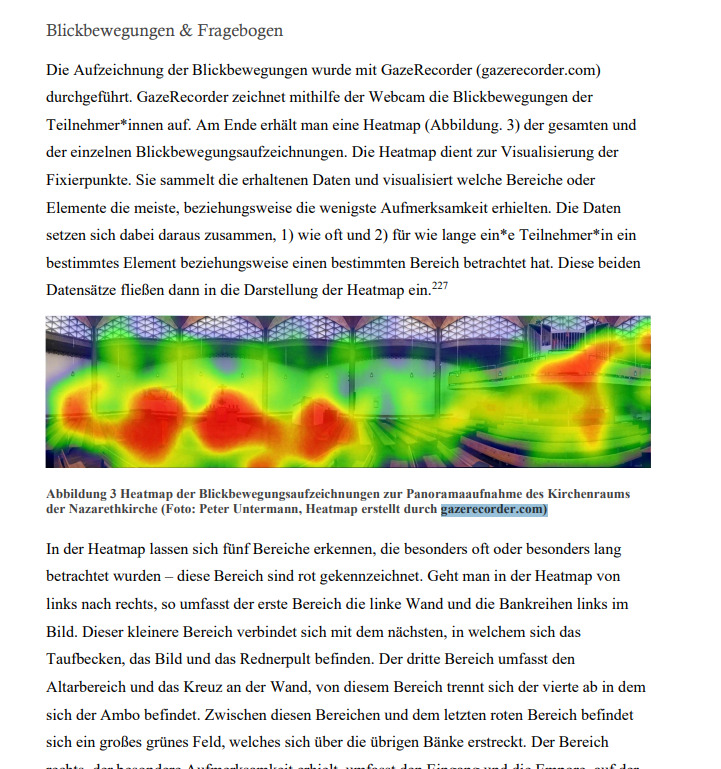The recording of the eye movements was done with GazeRecorder. GazeRecorder uses a webcam to record the eye movements of the participants. At the end, a heat map of the total and individual eye movement of the individual eye movement recordings. The heat map is used to visualize the fixation points. It collects the obtained data and visualizes which areas or elements received the most, respectively the least attention.
In the heat map, five areas can be identified that were viewed particularly often or for a particularly long time. These areas are marked in red. If one goes in the heat map from from left to right, the first area includes the left wall and the rows of benches on the left side of the mage. image. This smaller area connects to the next one, which includes the Baptismal font, the picture and the lectern. The third area includes the altar area and the cross on the wall, from this area separates the fourth one in which where the ambo is located. Between these areas and the last red area is a large green is a large green field that extends over the rest of the pews. The area right, which received special attention, includes the entrance and the gallery where the organ is located. the organ is located. Little attention was given in the observation the walls and and the windows.

https://eplus.uni-salzburg.at/obvusbhs/content/titleinfo/7744830